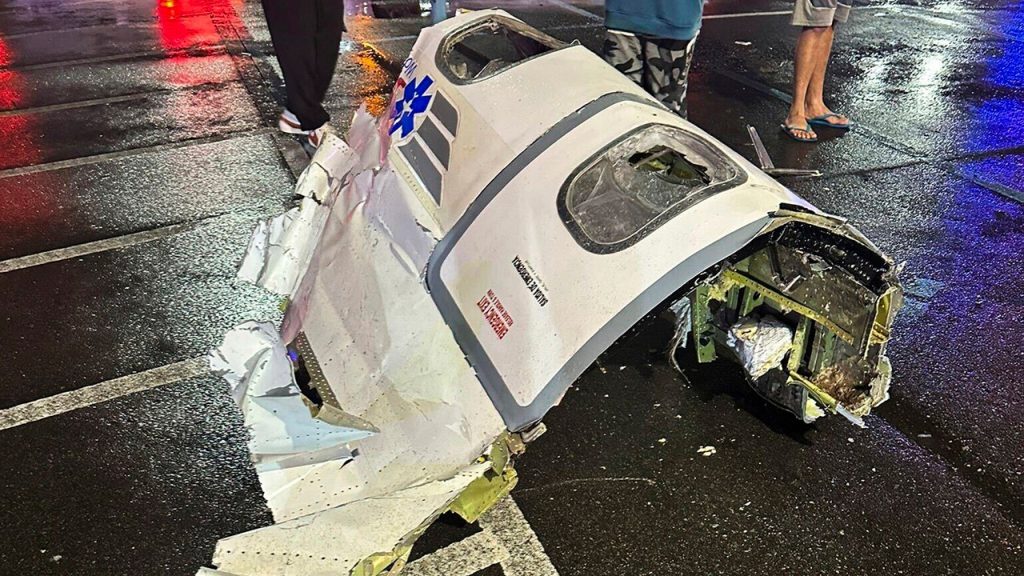The tragic crash of a Learjet 55 medical ambulance jet near Roosevelt Mall in Philadelphia, Pennsylvania, on Friday night, has brought renewed scrutiny to Jet Rescue Air Ambulance, the operator of the aircraft. This incident, which claimed the lives of all six on board – two crew members, a medical team, a pediatric patient, and her mother – echoes a previous fatal crash involving the same company just over a year prior. The Philadelphia-bound plane, en route from Tijuana International Airport with a planned refueling stop in Springfield, Missouri, was carrying the young patient home after receiving life-saving medical treatment in the U.S. The crash, which occurred shortly after takeoff from Northeast Philadelphia Airport, resulted in a devastating explosion and fire, engulfing nearby homes and vehicles. The loss of life, coupled with the extensive property damage, has left the community reeling and raised serious questions about the safety record of Jet Rescue Air Ambulance.
The parallel between the Philadelphia crash and the November 2023 incident in Mexico is stark. In that earlier tragedy, a Learjet 35A, also operated by Jet Rescue Air Ambulance, crashed on landing at Cuernavaca Airport, killing all five crew members on board. The plane had departed from Toluca International Airport and was not carrying any passengers at the time. The recurrence of fatal crashes involving the same company within such a short timeframe raises concerns about potential systemic issues within Jet Rescue Air Ambulance’s operations, including maintenance protocols, pilot training, and overall safety culture. The ongoing investigations into both crashes are crucial for determining the root causes and preventing similar tragedies in the future.
The immediate aftermath of the Philadelphia crash was marked by chaos and devastation. The explosion, fueled by the jet’s full tank, ignited a raging fire that spread to adjacent row homes and vehicles, causing significant damage. Firefighters battled the blaze, eventually bringing it under control, but the scene remained a sobering testament to the destructive force of the crash. Philadelphia Mayor Cherelle Parker addressed the tragedy, expressing condolences to the victims’ families and emphasizing the city’s commitment to supporting the investigation. The National Transportation Safety Board (NTSB) has taken the lead in the investigation, with the Federal Aviation Administration (FAA) and the Bureau of Alcohol, Tobacco, Firearms and Explosives (ATF) providing assistance.
The investigation into the Philadelphia crash will likely focus on a number of key areas, including the aircraft’s maintenance records, the pilot’s experience and training, weather conditions at the time of the crash, air traffic control communications, and any potential mechanical failures. The NTSB will meticulously examine the wreckage, analyze flight data recorders, if available, and interview witnesses to piece together the events leading up to the crash. Given the previous fatal incident involving Jet Rescue Air Ambulance, investigators will also scrutinize the company’s safety practices and overall operational history. The findings of the investigation will be crucial for determining the cause of the crash and implementing any necessary safety improvements to prevent similar incidents in the future.
The human cost of this tragedy is immense. The loss of the young patient, her mother, and the dedicated medical professionals and crew members is a heartbreaking reminder of the risks inherent in air ambulance operations. While these flights provide critical medical transport for patients in need, they also carry inherent dangers. The investigation will need to examine whether all necessary safety protocols were followed and if any factors, such as pilot fatigue or equipment malfunction, contributed to the crash. The families of the victims deserve answers, and the aviation community as a whole must learn from this tragedy to enhance the safety of future air ambulance flights.
The Philadelphia crash underscores the importance of rigorous safety regulations and oversight in the air ambulance industry. The NTSB’s investigation will play a crucial role in identifying any deficiencies in current regulations and recommending improvements. Increased scrutiny of air ambulance operators, including more frequent inspections and stricter enforcement of safety standards, may be necessary to prevent future tragedies. The lessons learned from this crash can help to ensure that air ambulance services, while inherently risky, are provided with the highest possible levels of safety and professionalism. The memory of those lost in this tragic event should serve as a constant reminder of the importance of prioritizing safety in all aspects of aviation.











